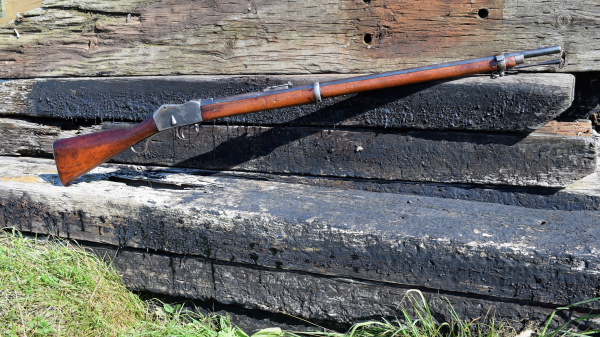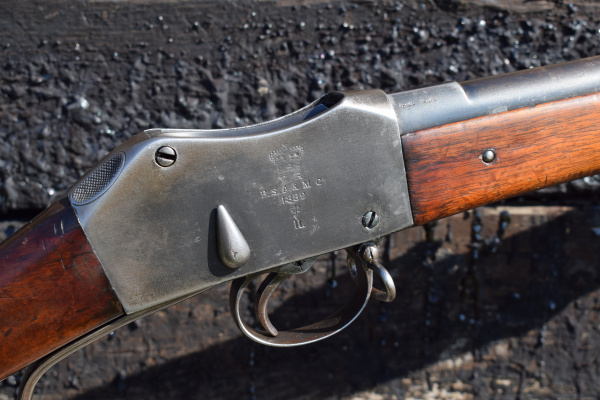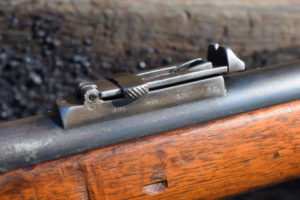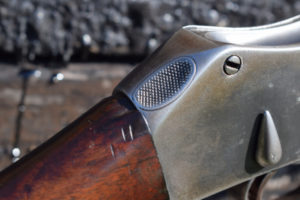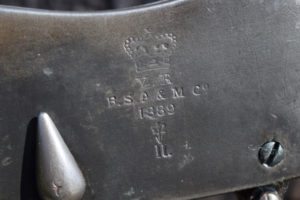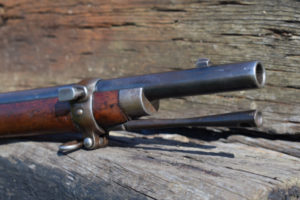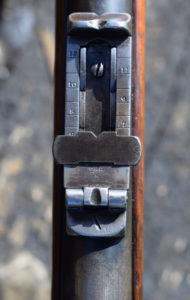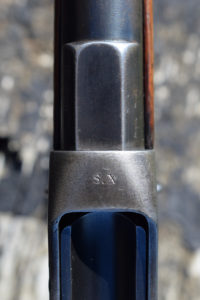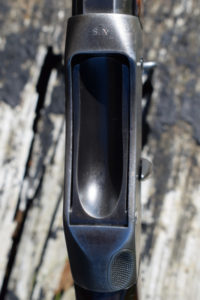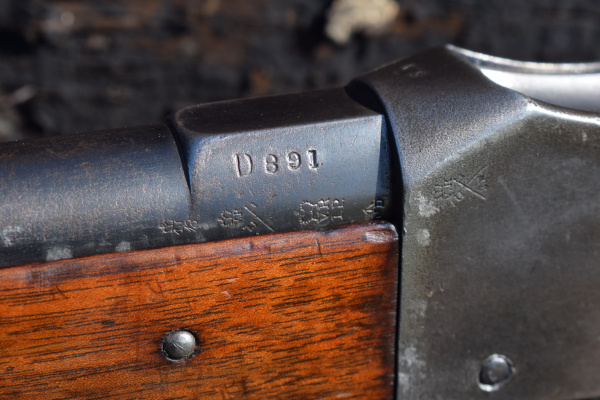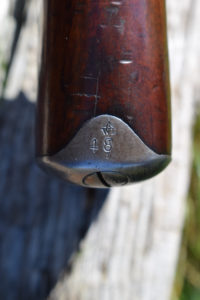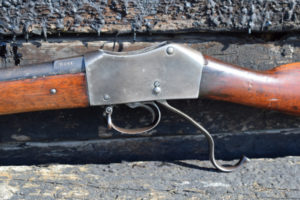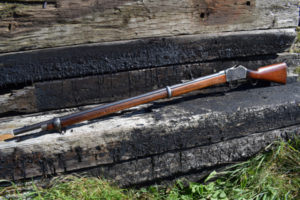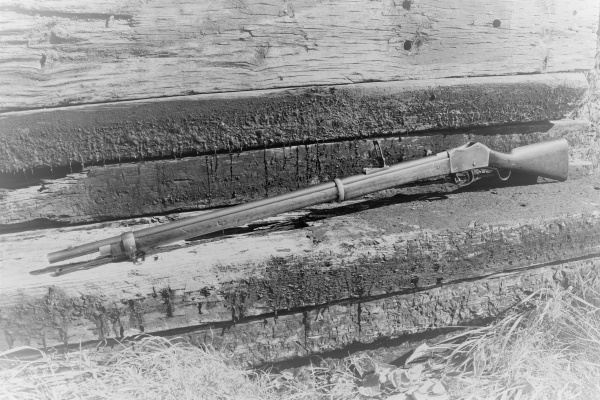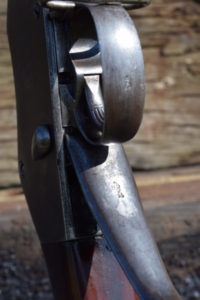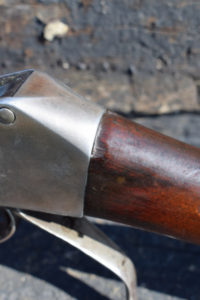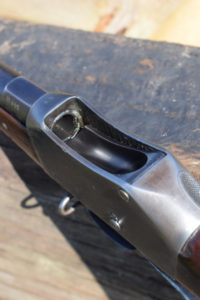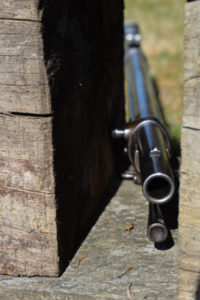Martini-Henry Mk II by B.S.A. for 1889 SOLD
Created on September 9th 2021
A Fine example of the Famous Martin-Henry Rifle
Of standard Military specification with no other alterations. Single shot falling block rifle chambered in the British military .577/450 cartridge. Effective to 1000 yards, accurate to 600 in the hands of an average soldier. Capable of 32 rounds a minute in the hands of an expert of the time! Equipped with the short lever under the straight sided action. The Mk II was obviously the perfected version of the earlier Mk I where the ordnance had effectively sorted out the short comings of the previous version. BSA produced 60,700 pieces of this type before the end of the run. The Martini-Henry was well received by the troops and in this guise was used by both Rifle and Infantry regiments in the Army. It was simple to use, sleek and uncomplicated so avoiding hang ups with kit or undergrowth, and effective.
The Mk II on offer here is 49″ in overall length, so has the short butt fitted. The round barrel is 33.1/8″ long and the trigger pull is 13.3/4″ to centre. It has the normal two piece furniture made in straight grained English walnut. Standard ladder rear sights graduated in two ways with short range 100 to 400 on the side of the ramp, and 500 to 1300 on the ladder face to be used in the upright position. The aiming picture is an open “V” with a front sight mounted on a block which doubles as a bayonet lug for the standard socket bayonet. No windage is provided. The sight components all carry “WD” and Enfield inspection marks.
The top of the action is marked with the letters “S.X.” meaning strengthened extractor. The RHS of the action is marked as follows;- “Royal cypher” / V.R. / B.S.A. & M. Co / 1889 / inspection crown over inverted arrow / II.” On the same side of the action is the cocking indicator. The rear of the action on the RHS top has the dipped thumb pad for positioning of the thumb as there had been complaints of users getting bruised cheeks if they wrapped their thumb over the action when firing. There was and “issue” over felt recoil with the Mk I, which is possible if you think about your own experience with necked cartridges of other calibres, as the ammunition had changed from the straight walled .577 to the bottle necked .450 round. Placing the thumb in the position indicated by the dip negated this problem, so the soldiers were drilled as such. The LHS of the action is devoid of marking apart from one VR proof mark with crossed sceptres.
There are four visible proof marks including “WD” acceptance stamps on the LHS of the breech and above those a serial number of “D 8912.” Proof marks are also visible on the RHS of the same. Both the trigger guard and the short underlever are Enfield inspected. The lever has a steel cup in the underside of the butt, which when closed the end of the lever clips into. The butt-plate is of the Mk II smooth steel type with rack number 48 on upper tang, butt stock carries an large “2” and a cartouche of the Enfield type with date above which could be “1902.” Both although strong, are difficult to read. Steel mid band and fore-end cap the latter having the side mount for the bladed bayonets – so this rifle will accept both types. The sling swivels are mounted upon the front band and the front of the trigger guard. There is a plug in the underside of the butt suggesting the early mounting point of the Mk I stock. Full length bulbous cleaning rod stored under the barrel – blued.
Condition is exactly as one would expect. Most bluing has turned to a dark grey-brown. With bluing remaining on the barrel. There are patches of strong edge wear on the high points and some loss of blue behind the rear sights. The stock shows the normal signs of a life in the military but not to the the point of degradation which is unpleasant to the collector. The stock still retains a pleasing shine to the surface built up by constant contact with the human hand. Slight chipping where the butt meets the action, not unusual and the result of shooting at sometime in its long life, with a loose stock bolt. The action is fine and the bore has typically strong Henry rifling in good order – no pitting but the usual signs of use as a black powder arm which reduces the freshness of the bore by its corrosive results, but this bore is as good as it could be for a rifle which has been well looked after by its military keepers. It would still be an effective shooter.
An important part of a military collection by any measure with the possibility of further use if so proofed.
Section 58(ii)
£ 1450. (Sold)
Comments Off on Martini-Henry Mk II by B.S.A. for 1889 SOLD
